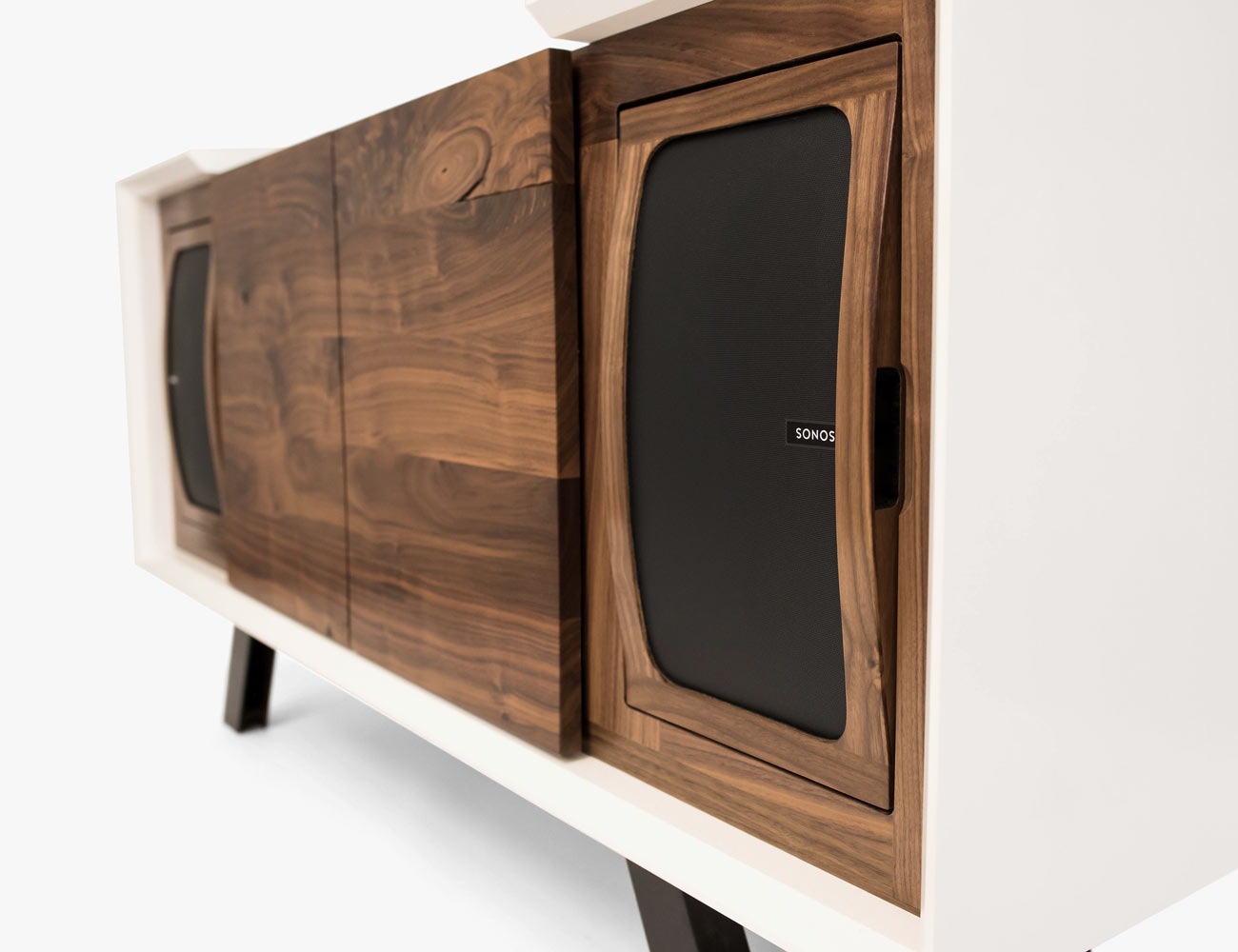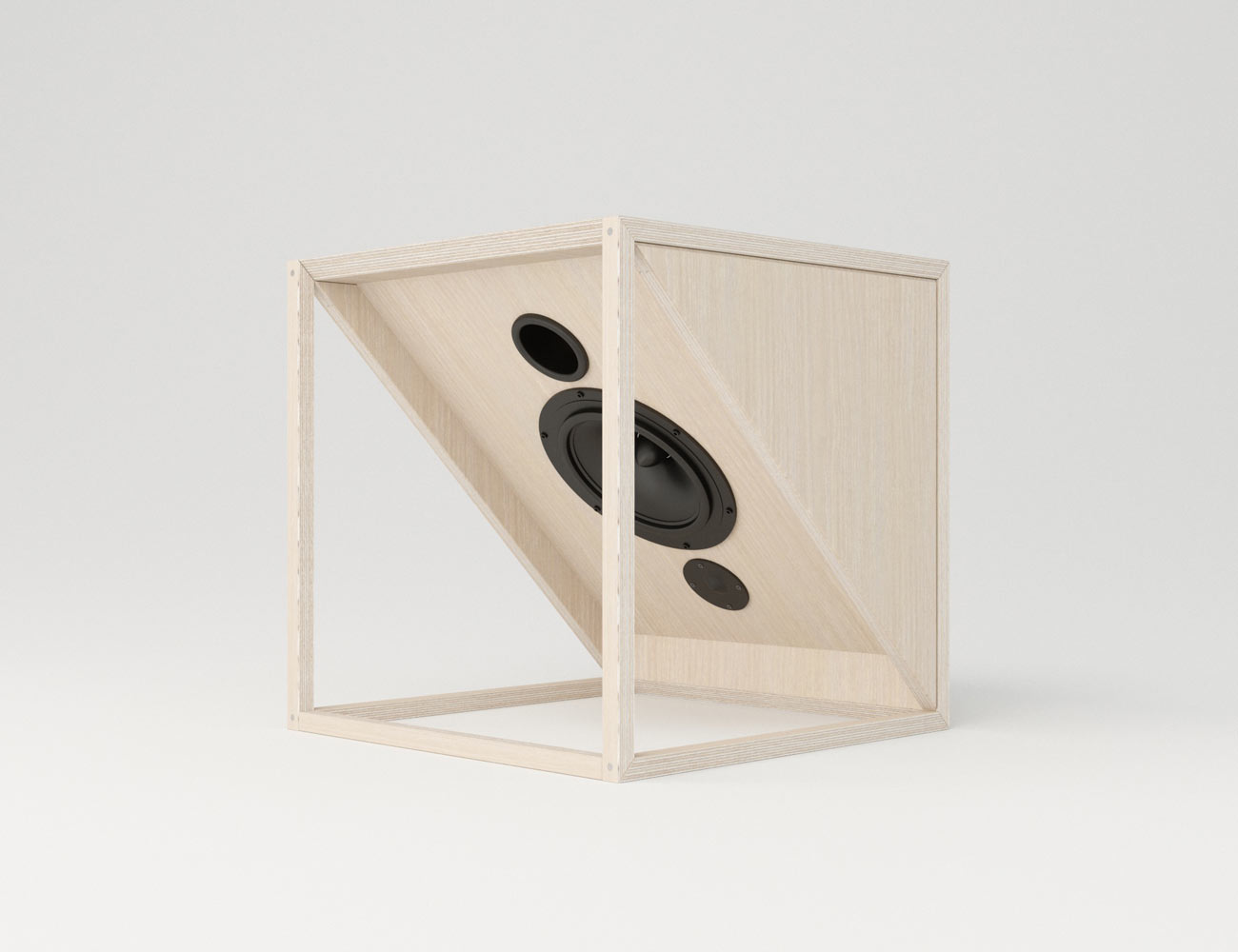From Issue Six of Gear Patrol Magazine.
Discounted domestic shipping + 15% off in the GP store for new subscribers.
Sound has always had an intimate relationship with the home. Thanks to the popularity of smart speakers and wireless multiroom systems, that relationship has only intensified over recent years. We can summon any song, at any time, to play in any room of the house in crisp, high-resolution, almost like it’s magic.
In the mid-20th century, the first stereo consoles and floor-standing speakers were focal points in any room: they were pieces of furniture. Fast forward to the present, and popular speakers like the Sonos Play:1 ($149) and Amazon Echo ($100) aren’t furniture at all. They are small, designed to be hidden out of sight. In the future, furniture and speakers will likely blend until we won’t be able to know where one begins and the other ends. When you go furniture shopping, you’ll actually be speaker shopping. And vice versa.

Sonos’s partnership with Wrensilva has already lead to beautiful integrations of Sonos speakers into furniture.
Sonos is one of the flag bearers for this movement. It announced a partnership in late 2017 with luxury audio company Wrensilva, which has already created a beautiful turntable-equipped stereo console with two integrated Play:5 speakers. Sonos has also announced a collaboration with home-furniture juggernaut IKEA. No details regarding the latter alliance have been released yet, but integrating speakers throughout the home is logically in the cards.
“Just like the perfect chair or considered lighting, sound plays a huge role in the experience of a room or space,” said Dmitri Siegel, Vice President of Global Brand at Sonos. “But there has been far less innovation and creativity in this aspect of interior design. These types of partnerships are finally pushing the evolution of design with sound.”
The partnership with IKEA is particularly interesting, considering that most people associate IKEA with affordable furniture. Up to this point, the confluence of design and sound has tended to skew more toward affluence, but this partnership could level the playing field. “We know that music enhances life at home, so we absolutely believe this trend will continue,” said Siegel. “Our goal with IKEA is to democratize music and sound in the home.”
From a design perspective, there are different ways to view this convergence. On one end, audio companies are placing existing speakers in new furniture, as is the case with Sonos and Wrensilva. On the flip side, some companies, like JLA Sound Systems, design the speaker and furniture as one unit from the ground up. JLA’s first speaker, the M.1 ($995), for example, is a side table whose design dictates that it also be a downward-facing speaker.

The JLA M.1 melds side table and hifi
“The actual angle of the cone of the speaker is unusual, because it’s aimed down, and that produces certain audio qualities,” said Juan Jofre Lora, cofounder of JLA Sound Systems. “The result is that you get a much deeper bass without having to go as low, and you can actually, through some pretty small tricks, produce sound that’s really rich even at low volumes.”
Furniture integrations make sense for audio companies moving forward because, for starters, furniture is big. In order to create great sound, you need a cabinet to capture and push large volumes of air and small speakers can’t physically do that. Lora said they can resort to “all kinds of acoustic-engineering gymnastics,” but the sound isn’t the same. The furniture’s size also allows the designers to hide the speaker and technology — they can minimize the number of buttons and dials that are visible. The electronics disappear, essentially, leaving just a beautiful piece of furniture.
Still, we come back to price. Big speakers and better-quality sound are always going veer toward the expensive, but a seamless integration of sound and furniture won’t become ubiquitous until it’s all affordable. The trend is heading there, but it could take some time.”As a company our goal is to be able to [make it more affordable] without sacrificing quality, and that means that there will always be a minimum threshold,” Lora said. “But we hope to balance that by creating products that have the life expectancy of a piece of furniture, rather than an electronic.”

